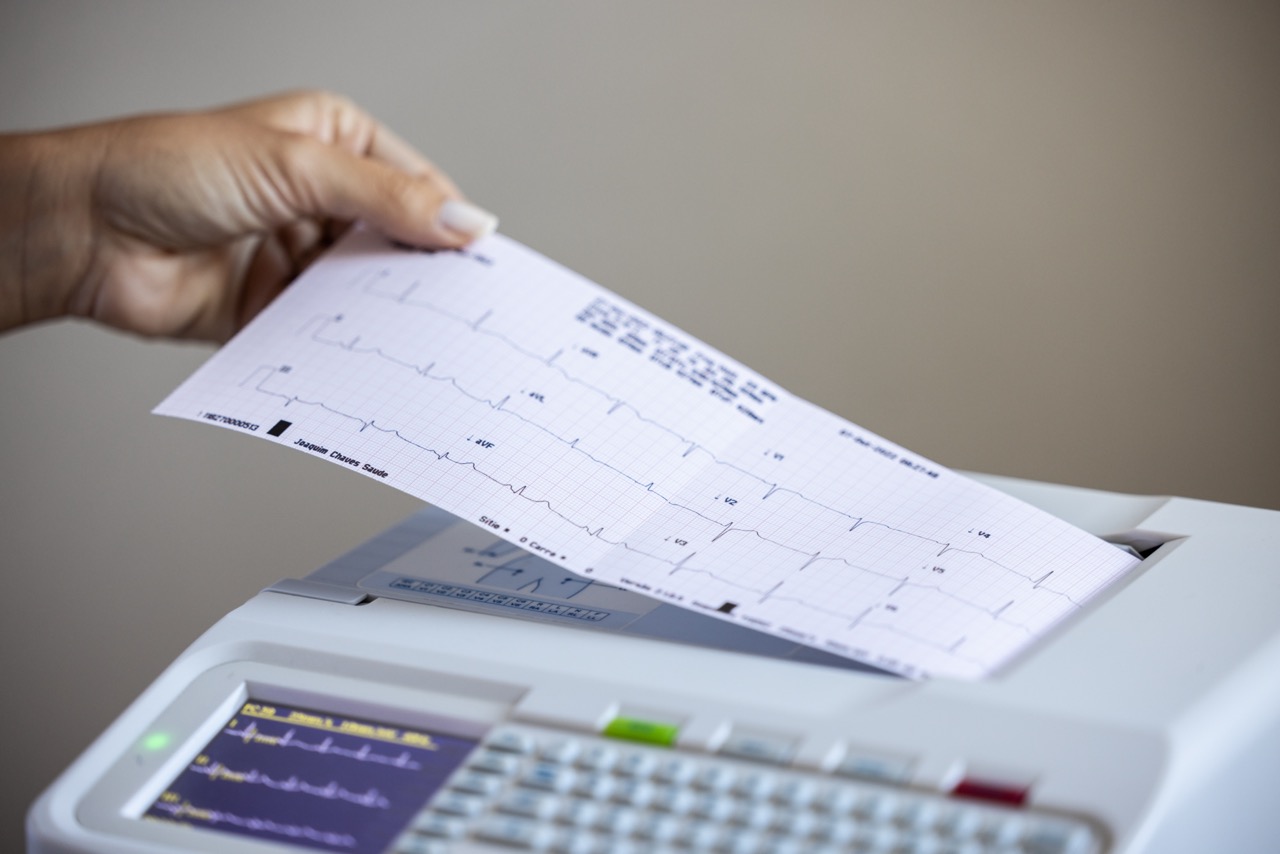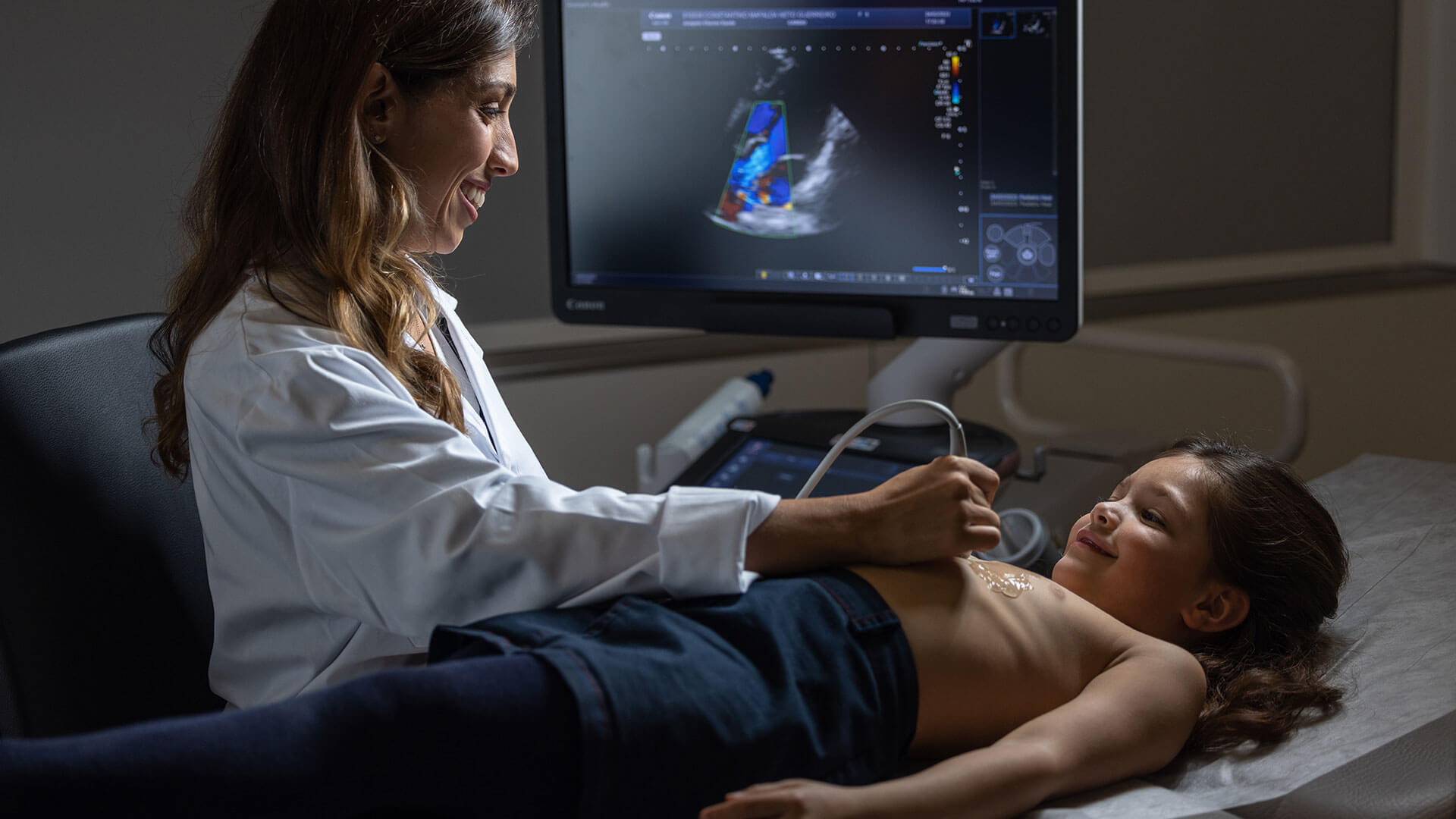Cardiovascular diseases are still the leading cause of death in the world in middle-aged adults, representing approximately 32% of all deaths. The electrocardiogram is one of the auxiliary diagnostic exams that enables an early diagnosis of irregularities which, if corrected, can prevent cardiovascular disease. Find out how it’s done and in when it is indicated.
Electrocardiogram: What is it?
The heart beats through electrical impulses that make it contract and pump blood through the body. The electrocardiogram picks up those electrical impulses through small sensors called electrodes, which are placed on the chest, arms and legs. The result is a graph showing the heart’s electrical waves, which enables the physician to identify the normal patterns that generate and transmit these impulses, controlling every contraction of this muscle, as well as opening and closing the heart’s valves.
Therefore, this is one of the most frequently performed Cardiology exams. Indeed, it is usually the first approach to screen for cardiovascular diseases, such as arrythmia or acute myocardial infarction.
What is an electrocardiogram for?
The electrocardiogram is an essential exam to detect arrythmias and other cardiac irregularities. It serves to indicate possible suspicions of cardiovascular disease that, if detected, should be subsequently confirmed by other tests.
How is an electrocardiogram performed?
An ECG is a simple and quick exam that usually takes less than 10 minutes. During the test, the patient lies on a stretcher while electrodes are placed on the skin. There is no pain involved, and patients can resume their regular activities immediately after the exam.
When to undergo an electrocardiogram?
An electrocardiogram (ECG) is part of a routine heart examination, and it is the physician’s responsibility to indicate how regularly the ECG should be performed, taking into account the person’s age, gender and lifestyle. However, women over 50 and men over 40 years of age should undergo an electrocardiogram every year, even if they do not present symptoms. This exam is also performed in Occupational Medicine.
An ECG can also be performed as part of a routine examination in people with a higher risk of heart disease, such as those with a family history of heart problems, high blood pressure, diabetes or smokers.
Furthermore, an electrocardiogram should always be performed whenever a cardiovascular condition is suspected. This is usually the first exam to be carried out when patients complain of chest pain, palpitations, fatigue, shortness of breath, light-headedness, dizziness or fainting. This way, it is possible to detect the following conditions:
• Myocardial infarction – it is even possible to identify the part of the heart affected and the extent of the damage;
• Coronary disease (blocked arteries);
• Tachycardia (abnormally fast heart rate);
• Bradycardia (abnormally slow heart rate);
• Other irregular heart rates, such as fibrillation, atrial flutter, among others;
• Structural abnormalities, like ventricular hypertrophy or atrial dilatation;
• Hereditary diseases associated with sudden death.
The electrocardiogram can also be used to assess the operation of cardiac devices, such as pacemakers and implantable defibrillators. This exam is also useful to monitor the evolution of a heart condition that has already been confirmed by other diagnostic tests.
What are the limitations of an electrocardiogram?
The principal limitation of an electrocardiogram is that this exam does not evaluate the pumping ability of the heart. Therefore, additional exams are necessary, such as an echocardiogram or Nuclear Medicine tests.
Despite its simplicity and high accuracy, like any other exam, the electrocardiogram may fail to identify some cardiac irregularities in patients. The usefulness of this test depends on the indications for the procedure, the clinical context in which it is performed, the correct use of the devices and the technologist’s experience.
What precautions should be taken when undergoing an electrocardiogram?
An electrocardiogram does not pose any health risks, as it is a safe and non-invasive procedure. It can be performed on any person, of any age, including pregnant women and newborns, and no prior preparation is required.
Ideally, the patient should abstain from physical exertion for 10 minutes before the exam, and from smoking 30 minutes before the exam. Patients can breathe normally during the procedure, but must remain still to avoid distorting the results.
Electrocardiogram at Joaquim Chaves Saúde
At Joaquim Chaves Saúde, the electrocardiogram is performed with total comfort, safety and efficacy. You can count on our team of experienced technologists and cardiologists to obtain the results you need, fast – in most cases, our results are available on the same day as the exam. Schedule your test now.







